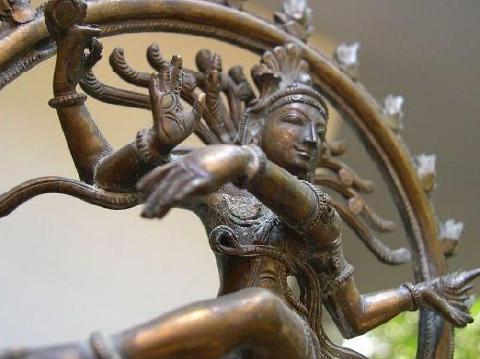
Photo credit: Calen Rayne
The Dance of Shiva: A Pilgrimage to South India with Andrew Harvey
Join author and teacher Andrew Harvey on a virtual pilgrimage in honor of Lord Shiva to some of the great temple sites and spiritual power places of South India. This virtual pilgrimage is the second of our Summer Trilogy examining the radical transformation of relationships in our time – specifically an exploration into the relationship between our Divine and human self.
We take a magical journey in the footsteps of the great mystics Ramana Maharshi and Sri Aurobindo whose lives were dedicated to and paved the way for the birth of the new human where all forms of gender and relationship are united into a higher synthesis. This is the work that Andrew Harvey has been dedicated to throughout his life through his books, documentaries, and seminars and most potently through pilgrimages. Through this virtual format, Andrew will be bringing you teachings and initiations for your own internal transformation and growth.
In addition to the Program outline, we include a special “Letter from Andrew Harvey” that describes the inner journey he will lead us on.
Video: Special Welcome and Introduction from Andrew Harvey
Program
Shiva’s Dancing Ground
The land of South India is a holy land that has given birth to many saints and sages who have in return impregnated the world’s soul with their sacredness. There are many shrines, temples, and natural monuments in the mountains, lakes, and earth formations dedicated to Shiva. This is the land where India’s great avatar Lord Krishna walked, where Sri Ramana Maharshi made his home, Sri Aurobindo’s disciples established Auroville, and Andrew Harvey’s own beloved teacher Father Bede Griffiths created his ashram and lived out his days.
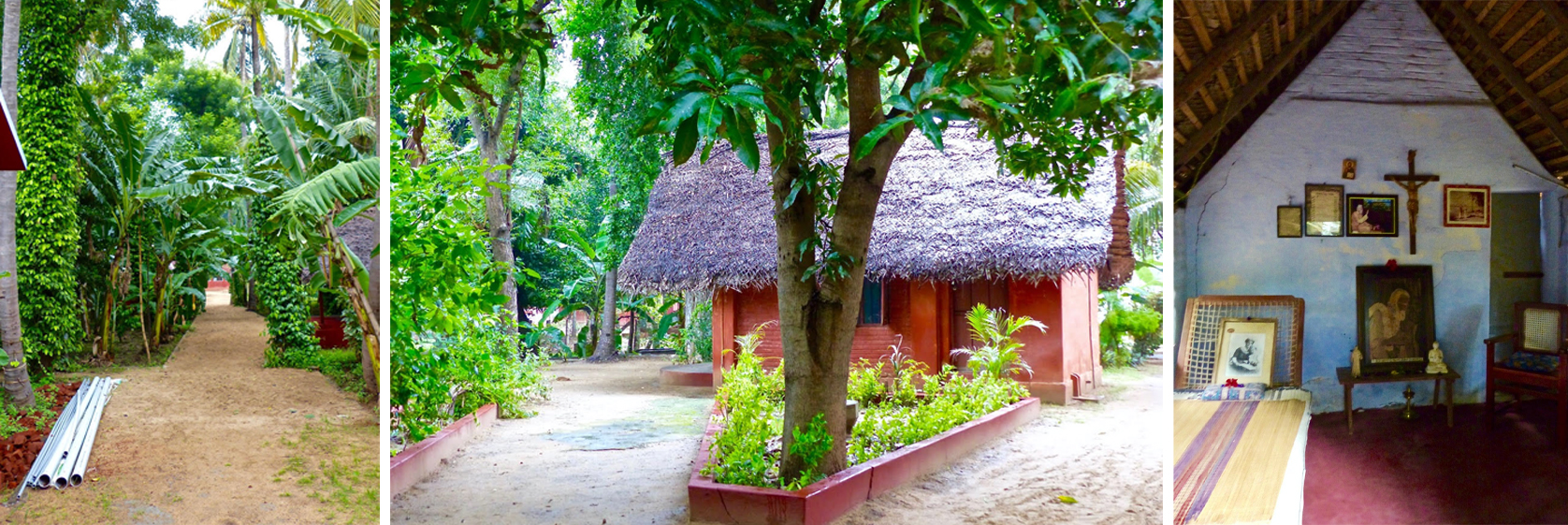
Photo credit: Andris Barblan
Andrew Harvey has his roots and soul in South India. He was born and spent his formative years here, with its temples and sacred sites as his childhood playgrounds. The South of India is distinct from the North. Sheltered from foreign invaders until the British Raj, it is the true bastion of Hindu traditions. In South India, the caste system was much less strictly enforced resulting in a far friendlier and more balanced society.
Through this exquisitely crafted virtual pilgrimage, Andrew will guide us through some of South India’s sites and temples, shrines of stunning beauty, where he will introduce us to a series of deep spiritual practices imparted to him by his own teachers and practiced throughout his life.
The journey begins in Mahabalipuram with its magnificent Shore Temple and other marvels, before moving on to the former French territory of Pondicherry (Puducherry), with its distinctive colonial heritage, and home to the Sri Aurobindo Ashram. From here we will visit the progressive, experimental town of Auroville, a manifestation of Sri Aurobindo’s vision, and then on to Chidambaram, the Capital of the Cholas, with its famous Natraja Temple. In Tanjore (Thanjavur) we will visit the Brihadeshwara Temple, a brilliant example of the major heights achieved by Chola temple architecture. In nearby Tannirpalli is the Shantivanam Ashram of the Christian Mystic Father Bede Griffiths. We complete our journey in Tiruvannamalai where Sri Ramana Maharshi lived and meditated for 54 years. Here we will make a virtual visit to the Arunachaleswarar temple and Mount Arunachala.
Andrew shares the fruit of his 40-year journey into Hindu mysticism, especially Saivism and its astounding vision of God the dancer, as well as diving deep into the evolutionary vision of Sri Aurobindo, and into the expansive universal vision of Christ consciousness that Father Bede Griffiths, the greatest Christian mystic of the 20th century, gave to the world.
Andrew shares essential and very powerful practices from both Hindu and Christian traditions that will profoundly deepen our experience of sacred India.
Mahabalipuram
Mahabalipuram, much of which is a UNESCO World Heritage site, also known as Mamallapuram, is famous for its Shore Temple. It was also the second capital and a bustling seaport during the time of the Pallava Kings of Kanchipuram. Ravaged by wind and sea, the temple complex was built in 700-728AD by the Pallava Dynasty, retains its alluring beauty, with its intricate rock carvings and monuments such as the Descent of the Ganges and the Arjuna’s Penance relief, depicting animals, deities, and other semi-divine creatures.
Puducherry
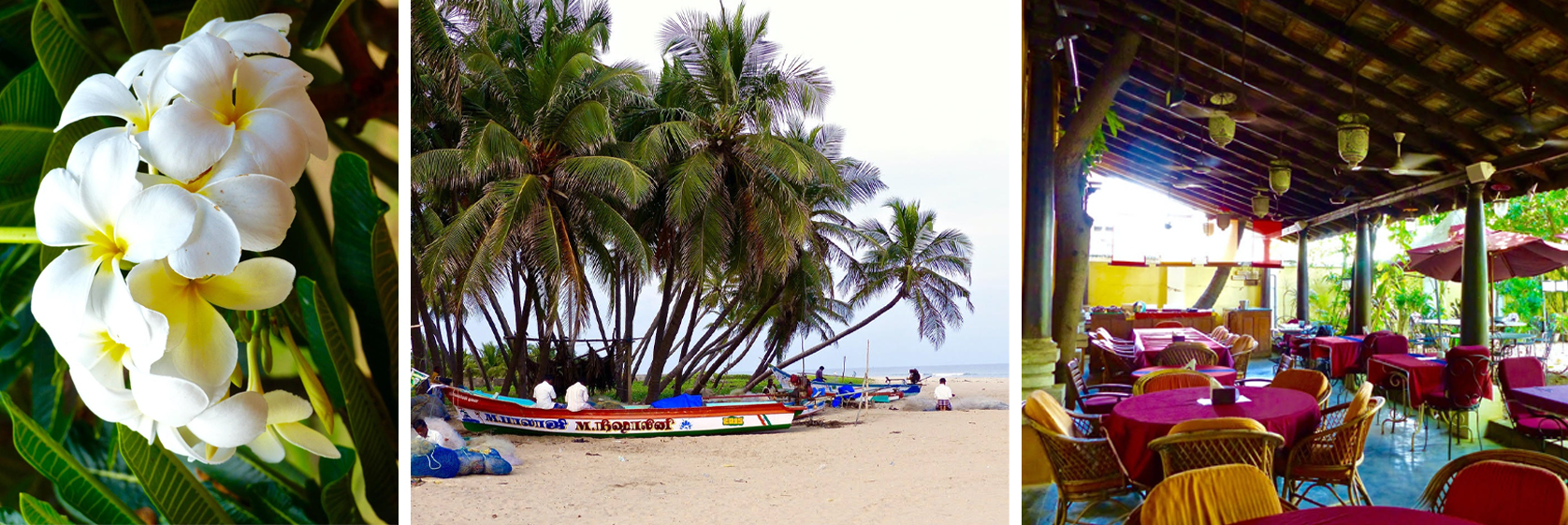
Photo credit: Andris Barblan
Puducherry, formerly known as Pondicherry, is considered the French Riviera of the east, with its French-style avenues and many colonial buildings. It is home to one of the most important Ashrams in India, the Sri Aurobindo Ashram, the former home of Mother Mirra and Sri Aurobindo. We will learn about the history and continued spiritual importance of this coastal city.
Sri Aurobindo was born in Kolkata in the North East of India in 1872. He was a poet, philosopher, yogi, and guru who was an advocate for Indian independence from British rule. Aurobindo, who passed over in 1950, wrote many important books including theses on human unity, yoga, and “the life divine.” He established the ashram at Pondicherry in 1926, welcoming students from around the world.
We will also learn about Auroville, “The City of Dawn”, an intriguing experimental town. Founded by Mother Mirra Richard in 1968, Auroville manifests Sri Aurobindo’s vision by creating a “universal town where men and women of all countries are able to live in peace and progressive harmony, above all creeds, all politics and nationalities. The purpose of Auroville is to realize “human unity.” The Matrimandir is a striking 30-meter high golden metal globe in the center of the town, conceived as “a symbol of the Divine’s answer to man’s aspiration for perfection.”
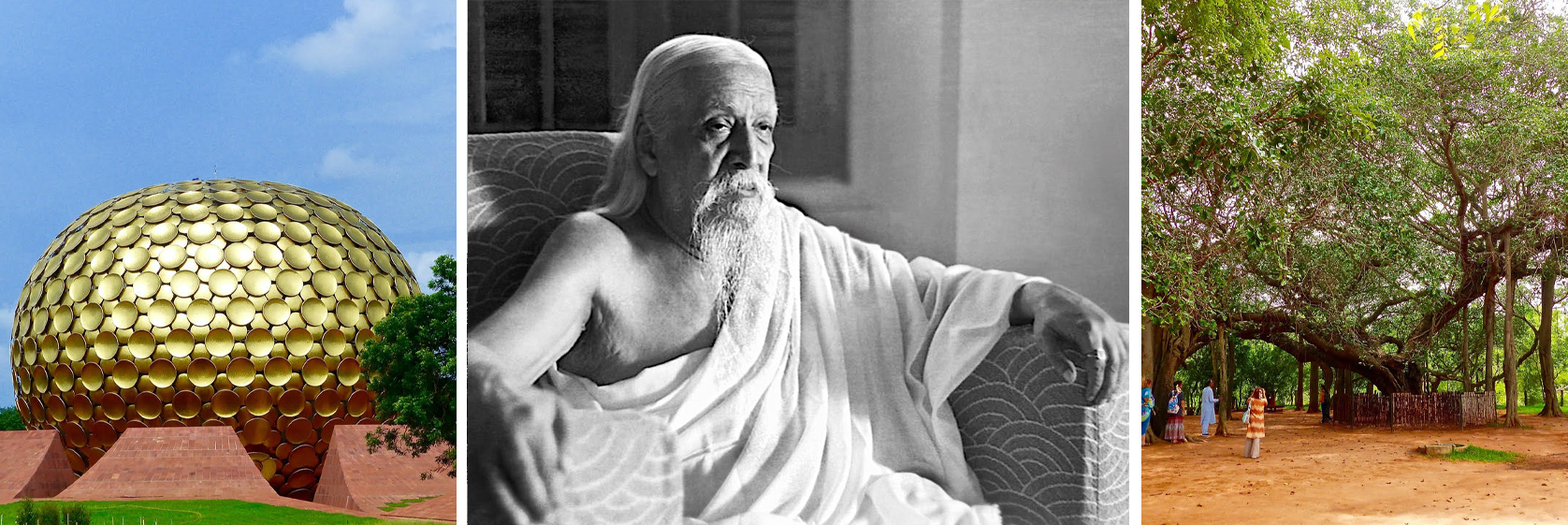
Photo credit: Andris Barblan; sriaurobindoashram.org
Chidambaram
Chidambaram was the Capital of the Cholas from AD 907 to 1310. Chidambaram means sky infused with an atmosphere of intelligence and wisdom derived from the words “chit” and “ambaram.” Chidambaram has been ruled, at different times, by the Pallavas until the 9th century, Medieval Cholas, Later Cholas, Later Pandyas, Vijayanagar Empire, Marathas, and the British. According to mythology, it was the precise spot where the Hindu god Shiva had once danced in a grove of Tillai trees.
We will hear about the famous Nataraja Temple, dedicated to the dancing Lord Shiva, a favorite deity of the Chola Kings. One legend surrounding its construction suggests that it was built by “the golden-colored Emperor” Hiranya Varna Chakravati, who suffered from leprosy. He came to Chidambaram on a pilgrimage from Kashmir in about AD 500. After bathing in the temple tank he was reputed to have recovered from the disease. As a thanks-offering, he rebuilt and enlarged the temple. Today the temple is still active with colorful ceremonies.
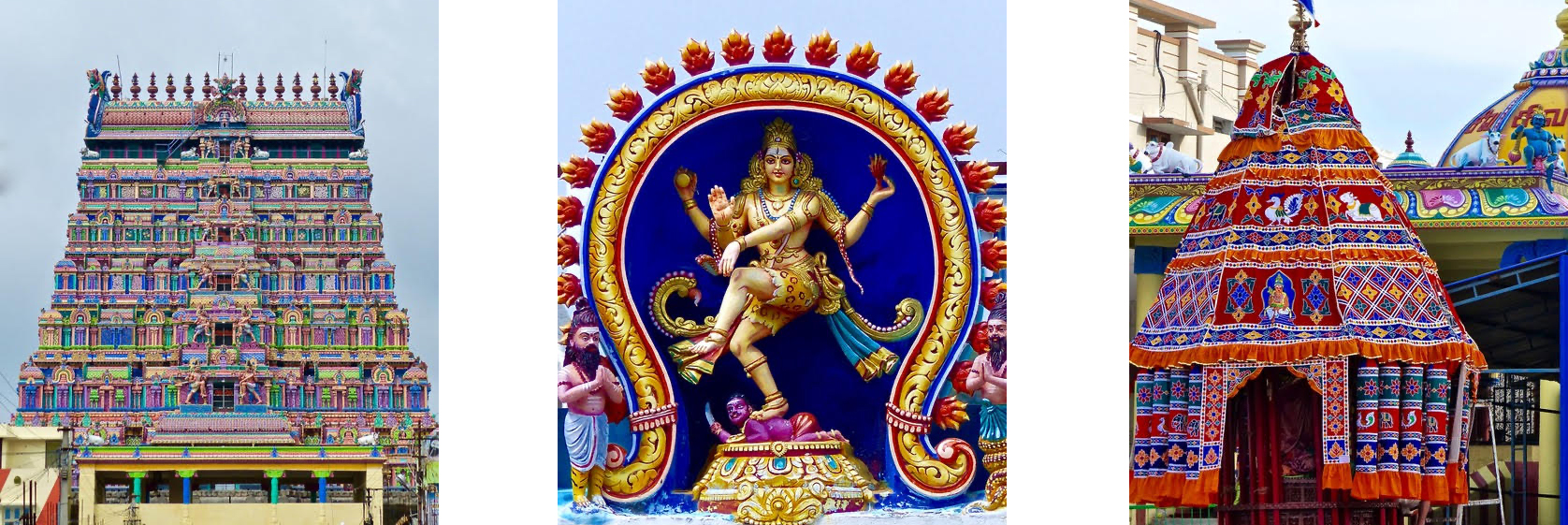
Photo credit: Andris Barblan
Tiruvannamalai
Tiruvannamalai is where Sri Ramana Maharshi lived and meditated for 54 years. Ramana Maharshi is widely acknowledged as the outstanding Hindu guru of the modern age. He was born in Tamil Nadu in 1879 and made his way to Arunachala at the age of sixteen, not leaving the sacred mountain until his spirit united with the holy mountain in 1950. Many people witnessed his light enter Arunachala as life left his body.
We will learn about the Sri Ramana Maharshi ashram, home to the Samadhi shrine of Ramana Maharshi, and the place where he attained Mahasamadhi (left his mortal coil.) It is also the Samadhi shrine of his mother, known as the Matribhuteshwara Temple. We will also hear about the Virupaksha cave where Ramana Maharshi lived and meditated from 1899 to 1916.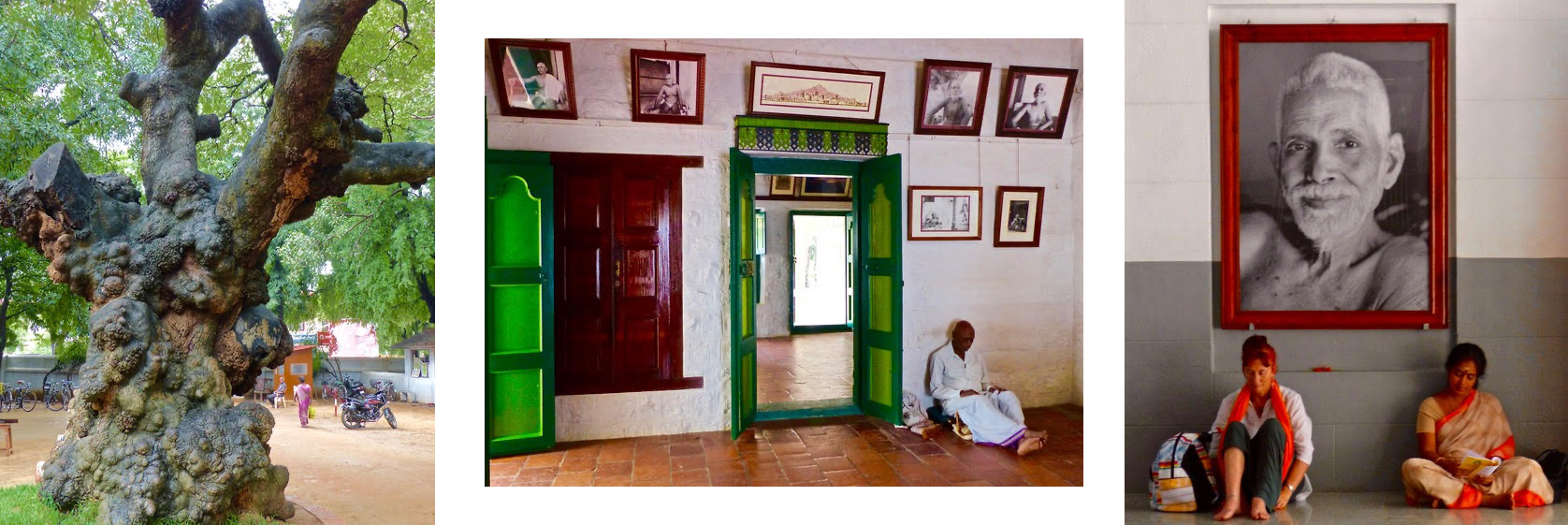
Photo credit: Andris Barblan
The Arunachaleswarar temple is thought to be the largest temple in the world dedicated to Shiva and one of the most captivating temple sites in India, dating from the 11th century. This major pilgrimage center lies in a striking setting at the foot of the rocky Arunachala Hill and is one of the holiest towns in Tamil Nadu. It is considered the home of Shiva and his consort Parvati.
In ancient times, the circumambulation of Mount Arunachala, known as Pradakshana (“pra” signifies the removal of all sins, “da” the fulfillment of all desires, “shan a” the freedom from the cycle of rebirth) was a popular pilgrimage route. Even though the city has built up around the mountain, still today offerings are made at shrines and temples, and many sadhus make their way along this sacred pilgrimage route.
Letter from Andrew Harvey
Dear Friends,
I invite you to join me on a virtual pilgrimage to the four most powerful places in South India, to experience for yourself a “Journey into Engoldenment”.
In Mahabalipuram, I will evoke the Sacred Marriage of the Father Transcendent and the Mother Immanent, which I believe is the central vision that India has to contribute to the world and the key to the regeneration of the planet.
Mahabalipuram was created as a glorious shrine to the Sacred Marriage by the enlightened Pallava kings who worshipped the Transcendent Shiva and the Immanent godhead as Parvati, and erected by the sea the Shore Temple which incarnates their subtle and resplendent vision.
I will illustrate the sacred transmission that is Mahabalipuram with three sculptures that you can see there. The first one is called the Rock, or Arjuna’s Penance. Many people believe this to be the greatest sculpture in the world exemplifying the Sacred Marriage of the Divine and the Human, with all the glory and beauty of the world that that creates. It is a living splendor of joy and a tender celebration of creation, especially in its depiction of animals. In this sculpture, you see how the Sacred Marriage gives birth to a unified vision of the world, the marriage of male and female, light and dark, nature and divine, body and soul. It is this vision I believe we now need to be inspired at the deepest levels to be able to birth a new world.
Then we will go to the great sculpture of Krishna holding up the Mountain, which reveals a new level of intimacy that the ancient world experienced between the Divine and the human. The third sculpture will be my favorite representation of the grace and sublime majesty of the fully empowered sacred feminine: Durga Killing the Asura, the buffalo demon. I will relate the cosmic drama depicted in this sculpture to the one now erupting on the planet. We will end our tour of Mahabalipuram with a virtual visit to the Shore Temple that in its sublime peace and delicacy breathes the dynamic harmony at the core of the Sacred Marriage.
To focus everything that we have learned and to help you integrate it beyond words into your heart, mind, soul, and body, I will offer a meditation that will help you marry the descending golden light of the Father with the ascending red light of the Mother. The meditation was taught to me by an old Shaivite yogi, and it will offer you an initiation into the empowerment and radiance of being born as an engoldened divine human being.
Next, we will go to Pondicherry, where I am going to celebrate the evolutionary breakthrough of the 20th-century mystic, Sri Aurobindo. He is the most important of all of humanity’s evolutionary mystics and offers us at this bewildering moment an amazing and precise vision of the birth of an embodied divine humanity arising out of the death of the old. I will focus on his all-transforming vision of the Divine Mother and his discovery of the new supramental light that she is sending us in our time of tragic disintegration to divinize us. And I will share Aurobindo’s astounding and precise descriptions of the new transfigured body that those who align with this vision can begin to experience.
Then I will share with you the bold, astonishing outlines of yoga that his consort, the Mother, did in the last 10 years of her long life. She carried on Aurobindo’s work and took it to another pioneering level by concentrating her full power on the transfiguration of her body and its cellular structure using a mantra, which I will share with you for your own wild and holy
purposes: OM NAMO BHAGAVATE.
Next, we go to the center of the Shaivite world and of Shaivite tantra, Chidambaram, where a golden Shiva the Dancer is worshipped in a small golden temple at the center of a temple complex which has been venerated for over 1400 years and visited by a glorious host of sages and mystics who have hymned its astounding power.
I will share with you the essence of the deepest teaching of the golden Shiva that I received myself from priests in Chidambaram. These teachings have been kept secret for centuries but are being revealed now, at a time when they are most needed. What they reveal is that the golden Shiva is not only a sublime manifestation of the Divine. It is also a sign of what a human being can become through abandonment to grace and intense adoration – nothing less than a transfigured person, consciously divine, not only in mind and heart but also in body.
I will share with you the testimonies and poems of the two greatest Shaivite mystics who adored the golden Shiva, Manikkavacagar and Appar. I will also try and transmit to you what I have learned in Chidambaram – that is the worship of the golden Shiva at the highest level of mystical understanding, seeded for us now to recover and enact the evolutionary truth of humanity. The power of this greatest of Shaivite temples, as well as that of other Shaivite temples in Tamil Nadu, has created what I would call a burning dancing ground in which authentic Initiates, as I know you all will be, will learn how to burn away in the flames of adoration so as to be remade in your full divine-human glory.
In the last part of this exploration, I will take you to the heart, 150 miles away, of the man who changed my life forever, the great Christian mystic Father Bede Griffiths. The only image he had in his hut was that of the Dancing Shiva which he recognized as a supreme embodiment of the full power of the Christ, who also was called the Lord of the Dance. Bede spent 50 years in South India and in his amazing last years experienced the truth of Chidambaram and Sri Aurobindo in his own transfigured body. I will share with you the simple but revolutionary teachings on this key to the next stage of our destiny that Bede shared with me. All of the great mystical traditions have in their secret traditions a vision of the embodied divine human. Like Aurobindo, and partly inspired by him, Bede did not merely honor this vision but lived it intensely and with awed and humble amazement, and seeded its truth in the core of my being. As many of you know I was born in South India; when I met Bede, I was re-born and the vision he gave me has guided and inspired everything that I have done since. It will be a great honor to introduce you to this saint and prophet and pioneer of a new world.
Our final destination, Tiruvannamalai, is built around the descended fire lingam of Shiva which is Arunachala Mountain. The mystics of South India consider it the holiest place in the world because it isn’t a mountain but the fire lingam itself that crystallized into a mountain. For thousands and thousands of years, this is the place where the greatest saints and siddhas and mystics have gone to meditate in the caves, places that hold immense power. And the greatest of the sages who lived there in modern times was Sri Ramana Maharshi, with whom I have a personal link because my father was the head of police in charge of South Arcott District where Ramana lived. Ramana is perhaps the most famous of all the sages of India in the 20th-Century although he never left the sacred Mountain. When he lay on his deathbed, a disciple cried out “Don’t leave us!” and his last words were, “Where would I go?” Anyone who has the grace to visit his ashram or even see his face will understand the majestic importance of those words. For many of us, he is far more than an enlightened guru. He is nothing less than the incarnation of Shiva himself, an ultimate and deathless sign of the Divine-human inviting us all into the next level of our evolutionary truth.
When he took his last breath, an immense flaming meteor passed over the fire lingam mountain, seen by hundreds of thousands of people. In our time together, I will try and share what I have been graced by him to learn about his life and his absolutely simple and universal teaching on the Self. And I will share with you the one practice he recommended called the Vishara practice, or the “WHO AM I” practice, which invites you to peel away ruthlessly all the concepts you have about your identity until something that can never be put into words but can be lived and known explodes softly through your entire being.
As you have probably understood by now, this pilgrimage has been very carefully constructed as a way of helping you enter more and more richly and deeply not only into the mystery of South India but into the radical and extraordinary vision of yourself as an evolving and divine human being. It is a miracle that South India has preserved so purely, and with such naked splendor, its vision of human possibility. And it is another miracle, both terrible and transformative, that we are living at the moment when this vision is most needed. Come and drink with me its burning golden wine so you can be flooded as I have been by the tremendous hope and unstoppable fearless energy that it will give to the open and humble and hungry and sincere. Om Nama Shivaya.
Andrew
Faculty
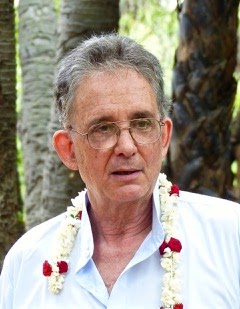 Andrew Harvey was born in South India where he lived until the age of nine, a period he credits with shaping his vision of the inner unity of all religions. He left India to attend private school in England, and entered Oxford University in 1970 to study history on a scholarship. At the age of 21, he became the youngest person ever to be awarded the Fellow of All Souls College, England’s highest academic honor.
Andrew Harvey was born in South India where he lived until the age of nine, a period he credits with shaping his vision of the inner unity of all religions. He left India to attend private school in England, and entered Oxford University in 1970 to study history on a scholarship. At the age of 21, he became the youngest person ever to be awarded the Fellow of All Souls College, England’s highest academic honor.
In 1977, Harvey became disillusioned with life at Oxford and returned to India, which he considers his “soul’s home,” to begin his spiritual search, beginning with the Bengali mystic Sri Aurobindo, and later the Tibetan Buddhist master Thuksey Rinpoche, and later still, the great Christian mystic Bede Griffiths. He has since lived in London, Paris, New York, San Francisco, and Chicago, continuing to study a variety of religions, including Hinduism, Buddhism, and Christianity. Harvey has written and edited over 30 books. Honors he has received include the Benjamin Franklin Award and the Mind Body Spirit Award (both for Mary’s Vineyard: Daily Readings, Meditations, and Revelations), and the Christmas Humphries Award for A Journey In Ladakh.
Among Harvey’s other well-known titles are: The Tibetan Book of Living and Dying, edited with Patrick Gaffney and Sogyal Rinpoche; Dialogues with a Modern Mystic; The Way of Passion: A Celebration of Rumi; Hidden Journey; The Essential Gay Mystics; and Son of Man.
Harvey is Founder and Director of the Institute for Sacred Activism, an international organization focused on inviting concerned people to take up the challenge of our contemporary global crises by becoming inspired, effective and practical agents of institutional and systemic change, in order to create peace and sustainability.
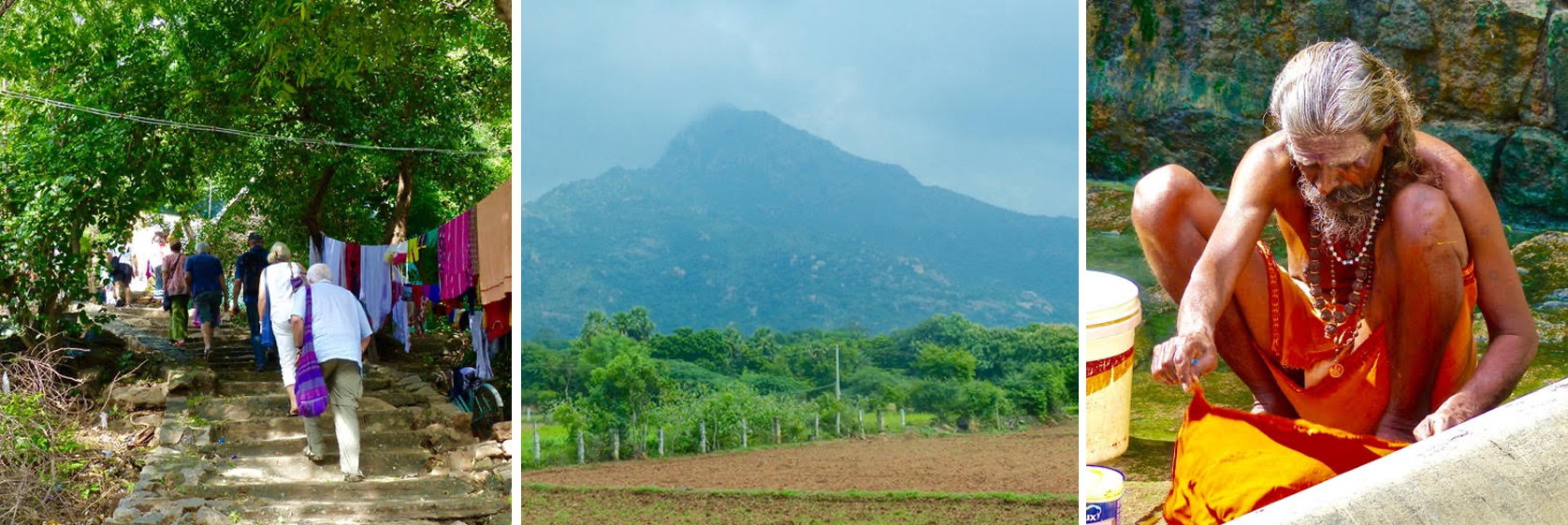
Photo credit: Andris Barblan
Required Reading – Choose at least two of the following (for students taking the class for academic credit):
- R. Champakalakshmi – “Religion, Tradition, and Ideology: Pre-Colonial South India”
- Joyce Burkhalter Fluedkiger – “When the World Becomes Female: Guises of a South Indian Goddess”
- Bede Griffiths – “A New Vision of Reality”
- Sri Aurobindo – “The Renaissance in India”
- Satprem – “Adventure of Consciousness”
Questions: Please do not email faculty directly with any technology or registration issues. If this is your first time purchasing from us, or you need a refresher, we suggest you review our tutorial How to Purchase a Course. If you do not have a user account, you will be required to create one upon your initial purchase. Save your username and password as you will need it to login to access course materials later and to make purchasing faster in the future. If you need technical assistance you can use the chat button located at the bottom, left-hand side of the screen and you can also email our Registrar, Veronica Saldias at registrar@ubiquityuniversity.org.
Information about how we process refund or cancellation requests can be found here: Refund and Cancellation Policy.
Archived Webinar Contact Information:
If you have questions or require additional assistance, you may click the “Chat” button on the lower, left-hand side of the screen, and submit your question. Our help desk will respond as soon as possible. Please do not email faculty directly with any technology or registration issues.


